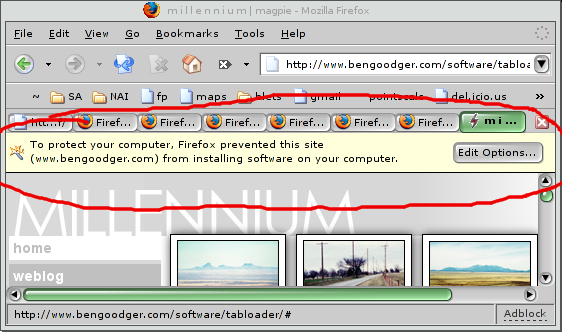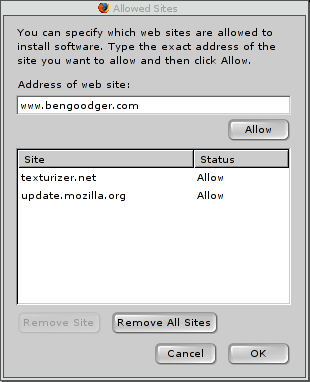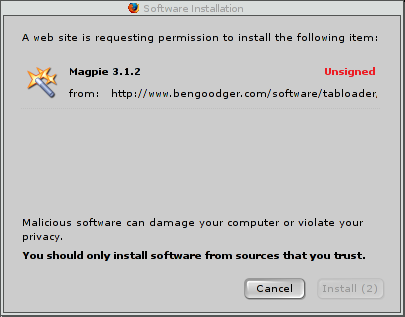Patents: I haven’t been blogging much, as I’ve got the damn flu. I thought I was clear after a minor bout, then it came back around again for another run… urgh. Now I’m all hot, confused, achy, and (due to it affecting my ears and therefore sense of balance) clumsy. Damn you, influenza virus! :(
But there’s some good news — NoSoftwarePatents.com has opened, with a nice, clean, clear website full of excellent content. Not only does it cover the usual list of basics, with good examples like FFII’s web-shop example, it goes into more detail about parallels; here’s a great one:
Patents on software are just as wrong as expanding the patent system to literature. With patents on story elements, no movie could be published without having to firstly check whether there is any general idea in the storyline that someone patented during the last 20 years. Here’s an example: At first sight, Dirty Dancing and Titanic are two very distinct movies. However, if there were patents on story elements, then the makers of Dirty Dancing could have sued the studio of Titanic. Both movies have a scene in which a poor boy takes a rich girl from a party of her social peers to a dancing party of his group, and she enjoys it. Dirty Dancing came out only nine years before Titanic, so any patent would still have been in force. No one knows whether James Cameron had that Dirty Dancing scene in mind as he wrote the Titanic script. Maybe Cameron never saw Dirty Dancing but the patent (if it existed) could be used against him anyway.
That’s exactly the right parallel to make! Software patents cover the tens to hundreds of little algorithms you need to put together to make a software product, and comparing an algorithm in a software product to a scene concept in a movie, illustrates that nicely.
Each page has a little quote from heavy-hitters like Bill Gates, Oracle, Deutsche Bank, PriceWaterhouseCoopers, etc., coming out against swpats. There’s also a section dealing with the disinformation that the other side has been putting out.
Next time you need to send a URL over to educate someone about this issue, this is the one to reach for.
Some news on the EU Software Patents Directive — IDA eGovernment News reports that ‘the formal approval of the draft Directive on the patentability of computer-implemented inventions by the EU Competitiveness Council has been postponed due to translation delays’, and notes that ‘on 6/10/2004, the Parliament’s Internal Market Committee selected former French Prime Minister Michel Rocard to draw up its response.’ It goes on:
Unsurprisingly, the appointment of Mr Rocard — an outspoken adversary of software patents — was welcomed by opponents of the proposed directive and criticised by its supporters. That Michel Rocard is taking over the dossier reflects the fact that the wider economic, infrastructural and social implications for Europe are now seen more clearly. Also, in the Council a learning process has begun, and it will be supported by the Parliament’s move, Mr Holger Blasum of the Foundation for a Free Information Infrastructure told journalists. On the oher hand, Francisco Mingorance of the Business Software Alliance pointed out that Mr Rocard hasn’t shown any sympathy to the directive in the past. We can only hope he will be sufficiently open to the view of persons and groups which have a different opinion, he said.
Well, that sounds like good news to me ;)



Indymedia cross-border takedown reaches Slashdot
Web: The slashdot story. The comments contain a massive amount of noise, but there are some highlights…
Some details of the backend; it appears Indymedia need more mirrors, and the imc-tech list and #tech channel are the best contact locations to get in touch. The comment also notes that the Mir CMS used by most IMCs generates static HTML — which is a good thing! I hereby withdraw my kvetching about server-side dynamic scripting in that case ;)
The techie who ‘had the contract with Rackspace’ comments, and provides a link to his weblog, which contains copies of the trouble tickets.
He also notes that the possible illegal posting was a newswire submission — therefore not ‘published’ per se, just uploaded in the same way an unmoderated-up slashdot comment is.
And finally — he notes that the EFF are offering to represent himself and Indymedia pro bono. Yay EFF!
This is great news. Top-secret takedowns are not a good thing, especially when they span three national borders…